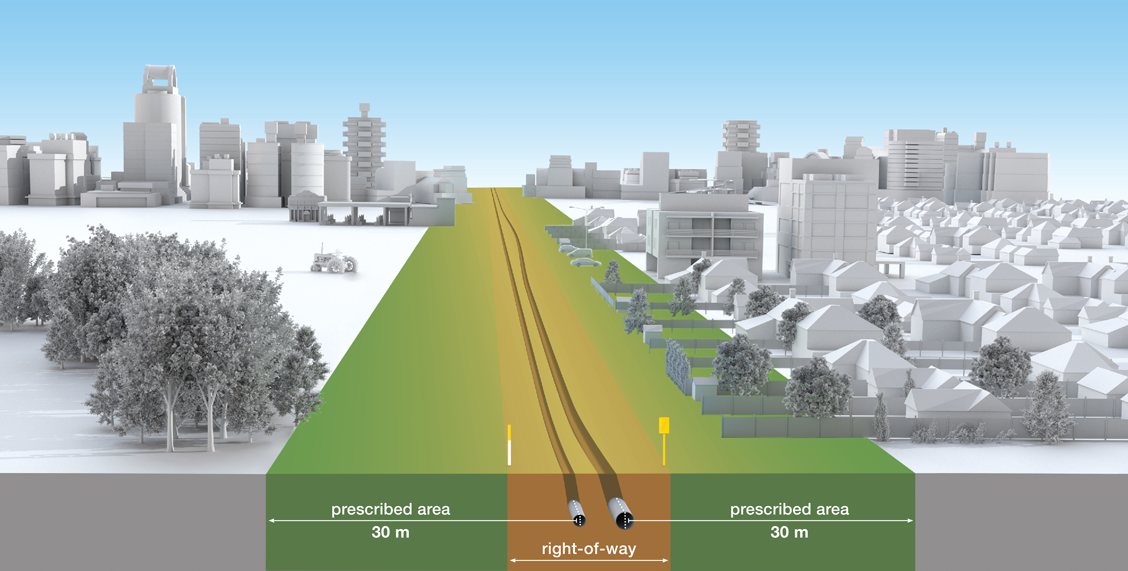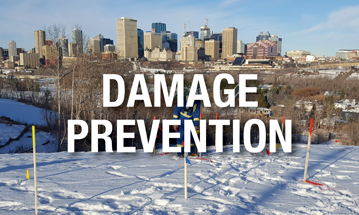Conducting Activities Safely Near Federally-regulated Pipelines
Those who plan to conduct certain activities near federally-regulated pipelines are required to confirm the location of pipelines and obtain written consent from the pipeline company prior to undertaking the activity.
- Confirming the Location of Pipelines: this step must be done through a locate request at least three working days prior to starting any work (except in the case of emergencies), by either contacting a one-call notification centre where the service exists, or by contacting the pipeline company directly.
- Obtaining Written Consent: this mandatory step can be done by contacting the pipeline company directly. In circumstances where parties are experiencing difficulty agreeing to the terms of the work, or the apportionment of costs related to authorized construction or disturbance, they can contact the Canada Energy Regulator (CER) for assistance. The parties may resolve the matter through the CER’s Alternative Dispute Resolution services or through adjudication by the Commission (section 335 application).
Click on each box below to find out more information about reaching agreement for conducting activities near federally-regulated pipelines and determining how costs are managed.
Damage Prevention Framework
Keeping people and the environment safe when conducting activities near federally-regulated pipelines is why the damage prevention framework exists. When people know where pipelines are located (by contacting a one-call notification centre where the service exists, or by contacting the company) and when companies provide instructions on how to work safely near their facilities (through authorization or written consent), the land above, below, and next to the pipeline can then be used safely.
Under the damage prevention framework those planning to undertake activities near the pipeline, the pipeline company, and the CER each have a role in ensuring work near federally-regulated pipelines is safe. To learn more about the roles and responsibilities, visit the CER’s damage prevention webpage. The Canadian Energy Regulator Act (CER Act) and the associated Damage Prevention Regulations (DPRs) set out the responsibilities of anyone planning to undertake activities within the prescribed area, or cross a pipeline, and of pipeline companies.
Conducting activities near a CER-regulated pipeline: obtaining authorization
The regulation Damage Prevention Regulations – Authorizations (DPR-Authorization) provides the safety requirements for working near a CER-regulated pipeline. If you are working within the prescribed area, that is, 30 metres from the centreline of a pipeline, you must obtain authorization (written consent of the pipeline company or an Order issued by the Commission) prior to undertaking certain activities.Footnote 1
The following activities require authorization:
- conducting an activity that would cause a ground disturbanceNote *, or the construction of a facility across, on, along or under a pipeline, within the prescribed area; and
- the operation of a vehicle or mobile equipment across a pipeline (crossing a pipeline).
These will be referred to as “activity” or “activities” throughout.
What is the prescribed area

The prescribed area (called the prescribed area in regulations), defined in the DPR – Authorizations, extends 30 metres to each side from the centreline of the pipe. It is an area where extra precautions and authorization (written consent of the pipeline company or an Order issued by the Commission) is required before certain activities can occur.
Reaching agreement for activities near a pipeline and apportionment of associated costs
The CER encourages pipeline companies and anyone planning to conduct an activity near a pipeline to work together to reach agreement regarding activities within the prescribed area, or for crossing a pipeline. The regulations require that the written consent provided by the pipeline company outlines how to safely carry out activities near the pipeline.
If there are costs directly incurred as a result of the authorized construction or disturbance, the parties are encouraged to reach agreement on how these costs will be addressed.
If parties are not able reach an agreement on either of these elements, they can seek assistance from the CER.
Obtaining assistance from the CER
The CER expects that the vast majority of activity requests made to pipeline companies will result in a timely issuance of written consent for the proposed activity to occur. However, if the person(s) who is planning to conduct an activity near the pipeline is experiencing difficulty agreeing on the terms of the work, or who pays for costs related to authorized construction or activities, they can contact the CER for assistance.Footnote 2
There are two approaches available to manage disagreements, both of which can be accessed by filing a section 335 application:
Alternative Dispute Resolution (ADR): ADR is a voluntary and confidential way for parties to jointly resolve disputes. It includes negotiation, facilitation and mediation. The CER encourages parties to use ADR to resolve issues to explore and understand interests, and develop acceptable solutions where possible.
Note: ADR services can be requested at any time and prior to filing a section 335 application; however, both parties to the dispute must agree to participate
Adjudication (Hearing and Decision): if a dispute cannot be resolved through ADR, or if the parties do not wish to participate in ADR, they can request the Commission to conduct a hearing to determine the matter.
Potential applicants can refer to the following guidance documents for additional information:
- Section 335 Applications – Process Guidance for Applicants
- Section 335 Applications – Guiding Principles for Cost Apportionment Decisions
- Date modified:




